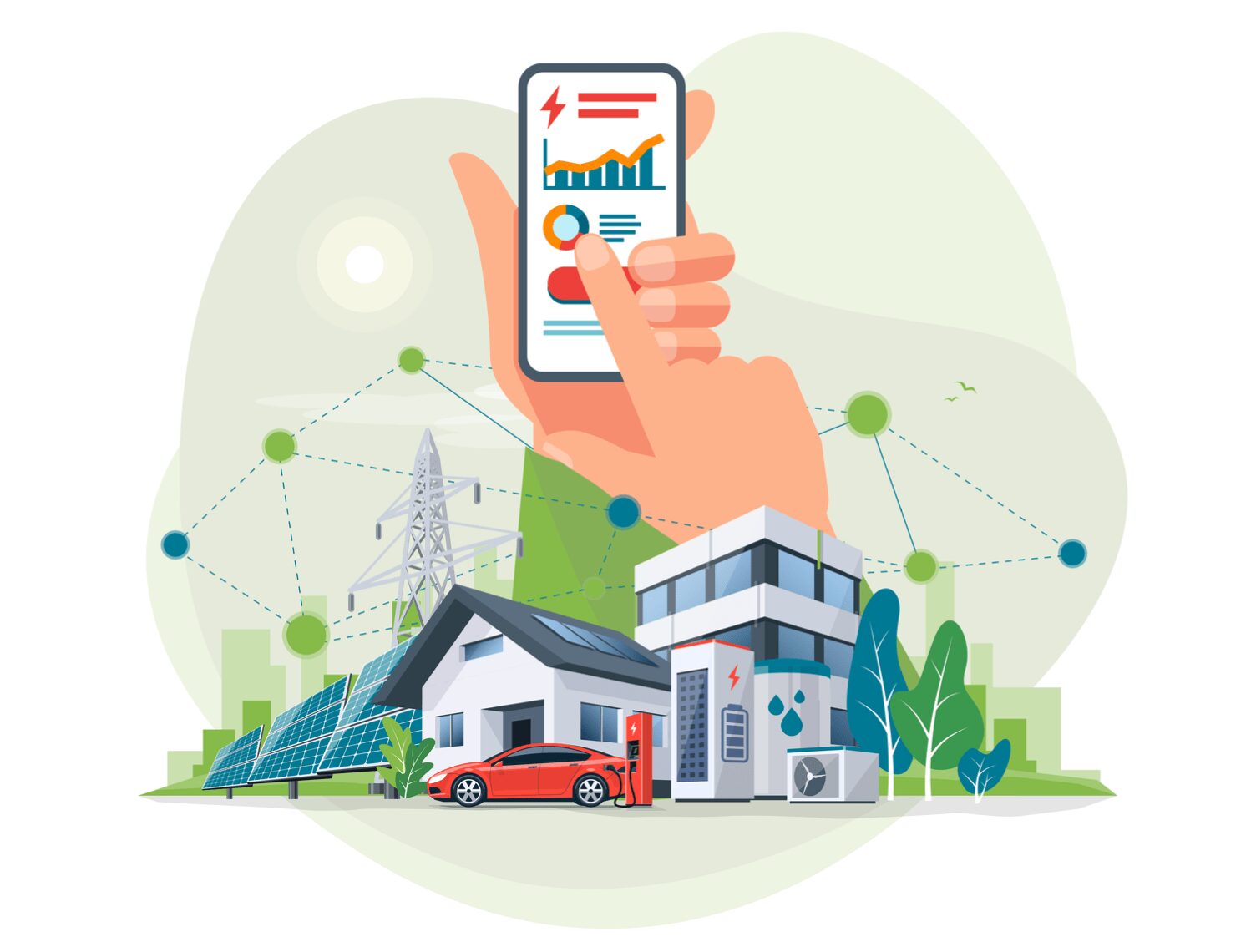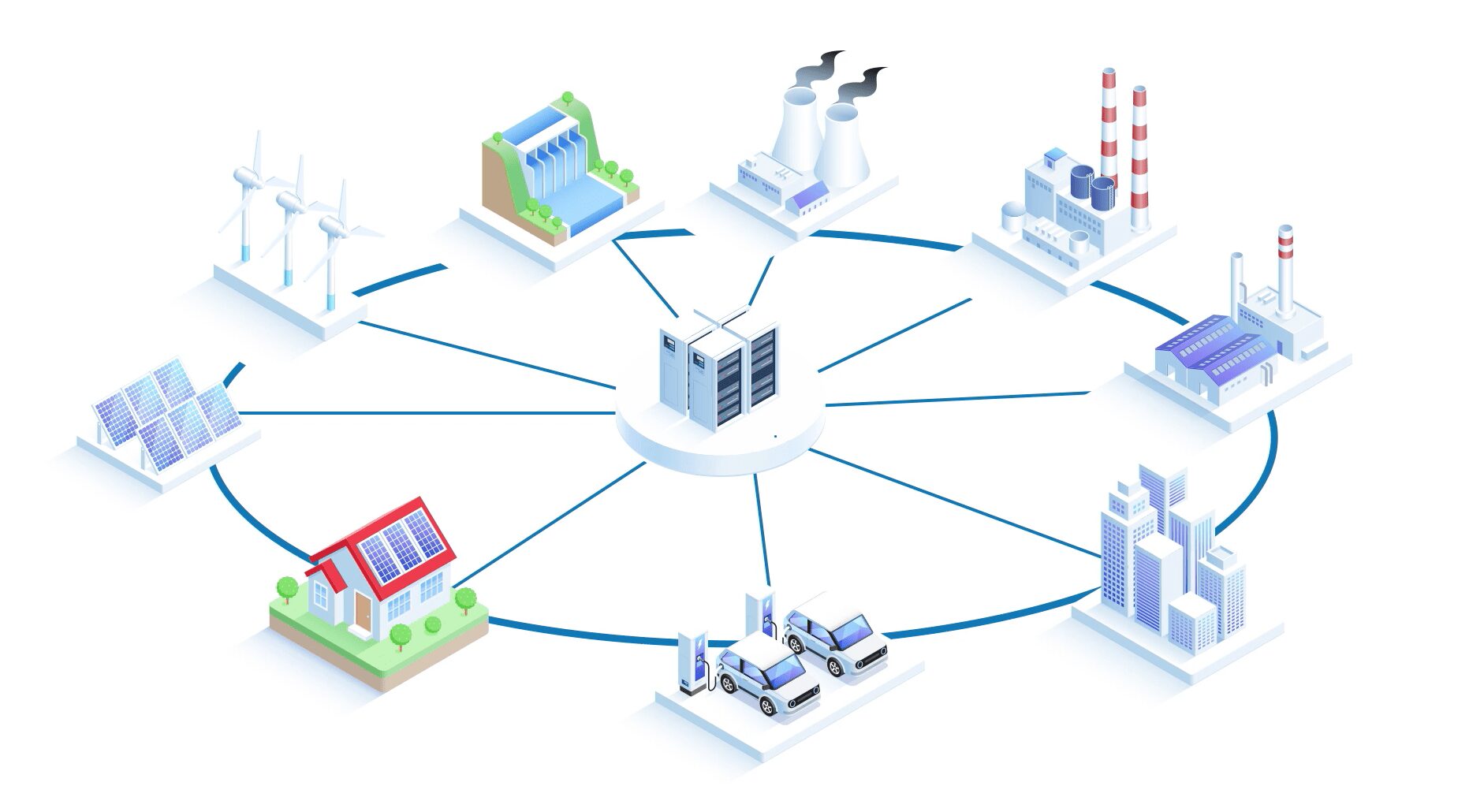Hot Business Trends of 2023: Virtual Power Plants (VPPs)

The concept of wind farms did not arise today, but it took time for it to gain practical recognition and dissemination. Historically, the multiple sources and methods of producing renewable energy have made their reliable integration into a single electrical grid difficult. While conventional power plants can burn more or less fuel depending on changes in electricity demand, renewable energy sources such as wind farms and solar panels are dependent on weather conditions and their electricity output can be erratic.
Virtual power plants combine a large number of decentralized energy resources such as electric vehicles, home energy storage systems, electric water heaters, solar panels, smart electric heating systems and more into a single system. They can effectively use these energy assets by balancing the operation of the power grid, ensuring stable availability of electricity and increasing energy independence. It is a group of heterogeneous energy generators that together function as one large power plant. Decentralized energy management systems harvest energy from a network of distributed energy resources such as solar panels, large capacity batteries, wind farms and more. By using cloud-based systems and artificial intelligence tools to manage what happens where, these systems can rebuild themselves in real time and make energy networks more resilient despite fluctuations in supply and demand.
For example, if a wind turbine isn't producing power at the moment, a few charged RV batteries on the other side of town can help make up for it. Thus, virtual power plants provide efficient power generation even during periods of high demand. Another important point is that wind farms allow all participants, including households, to buy or sell electricity on the open market.
The growing demand for renewable sources for electricity generation in leading countries of the world has become a key factor in the development of the virtual power plant market. Concerns about the stability of power grids and rising energy prices and the increasing importance of renewable energy sources are factors driving the proliferation of virtual power plants. By optimizing the coordination and use of energy sources, wind farms reduce dependence on coal and gas, stabilize the grid and reduce energy costs for households. Interest from investors, industry leaders and government in startups that support wind farm management and energy storage is growing steadily, driving progress and competition in the field.
The global virtual power plant market is expected to witness high growth over the next ten years. According to forecasts The global virtual power plant market will grow from $0.88 billion in 2021 to $6.47 billion in 2028 at a CAGR of 32.89%
The US is a pioneer in the development of the virtual power plant market. The concept was first tested in California, New Jersey and Puerto Rico. In September 2020, the US Federal Energy Regulatory Commission (FERC) approved Order 2222, which required US grid operators to allow wind farms access to wholesale markets, putting them in direct competition with incumbents. Wind farms have become much easier to operate and activity in this area has increased dramatically.
In January 2021, in partnership with Tesla Powerwall startup Swell Energy, engaged in the development of solutions in the field of energy and smart grids, announced about plans to launch wind farms, including the islands of Oahu, Maui and Hawaii. Its Hawaii project is expected to be its largest to date, involving 6,000 residences. At the end of November 2022 Swell Energy raised $120 million USA to promote its wind farm programs in the USA.
Later that year Tesla launched its own wind farm in California to help the state's strained power grid and prevent customer outages. By November 2022, the program included more than 5,500 homes equipped with Powerwall batteries. In December, the automaker stated, which also creates a large wind farm in Texas.
Sunnova and equipment supplier VPP AutoGrid in September 2021 united to create a virtual power plant for California energy supplier Clean Power Alliance (CPA). . AutoGrid Raises Series D Funding for the amount of 85 million dollars from Schneider Electric Ventures, Microsoft Climate Innovation Fund, Shell Ventures and National Grid Partners, among others. And in May 2022 Schneider Electric announced about the intention to acquire this startup.
Wind power continues to be rapidly implemented in the United States. In October 2022, Sunrun announced the successful deployment of wind farms in Massachusetts, New Hampshire, Rhode Island and Vermont, making New England the first regional energy market to include wind farms.
As competition heats up, new startups are emerging. For example, in 2022, Lunar Energy, a residential wind farm startup founded by former Tesla executive Kunal Girotra, received funding in $300 million.
As demand for renewable energy grows and consumers become increasingly concerned about grid stability and energy costs, wind farm investment and new alliances are expected to accelerate in 2023. As more people electrify their homes and invest in electric vehicles, the wind farm business will continue to grow and we are just at the beginning of the process.
Another important event demonstrates the seriousness of this area for investment. On January 10, 2023, a group of major companies, including Ford, General Motors, Google Nest, OhmConnect, Olivine, SPAN, SunPower, Sunrun, SwitchDin and Virtual Peaker, formed a coalition aimed at expanding the virtual power plant market in an attempt to improve network resiliency and help reduce carbon footprint of the electricity sector. Under the auspices of a non-profit organization RMI participants formed the Virtual Power Plant Partnership initiative (Virtual Power Plant Partnership (VP3)), which will be aimed at forming a policy for the development of the wind farm market. Participants of the agreement statedthat will work together to set standards for expanding the use of virtual power plants (VPPs). Specifically, VP3 will work to “accelerate industry development and shape policies to facilitate the scaling of the wind power market”, and to this end the coalition will work closely with leading enterprises in sectors such as electric vehicles, home energy systems, building management, software, providers with utility-focused solutions and more.
Virtual power plants, or VPPs, are the logical next step in harnessing the full potential of distributed energy sources and consumers. Wind farm infrastructure will soon become the norm, not the exception, and will significantly improve the efficiency and resiliency of power systems. However, since WES is still a new technological paradigm, there is a great need to develop common standards and policies that are necessary when systems involve a variety of technologies and devices.
“Virtual power plants are poised for explosive growth, and RMI is committed to being at the forefront of their success... Our analysis shows that wind farms can reduce peak energy demand and improve grid resilience in the face of increasingly extreme climate events. The growing wind power market also means revenue opportunities for hardware, software and energy services companies in the construction and automotive industries. For large energy users, wind farms can significantly reduce energy costs while providing new revenue streams.” — said RMI CEO John Crates

